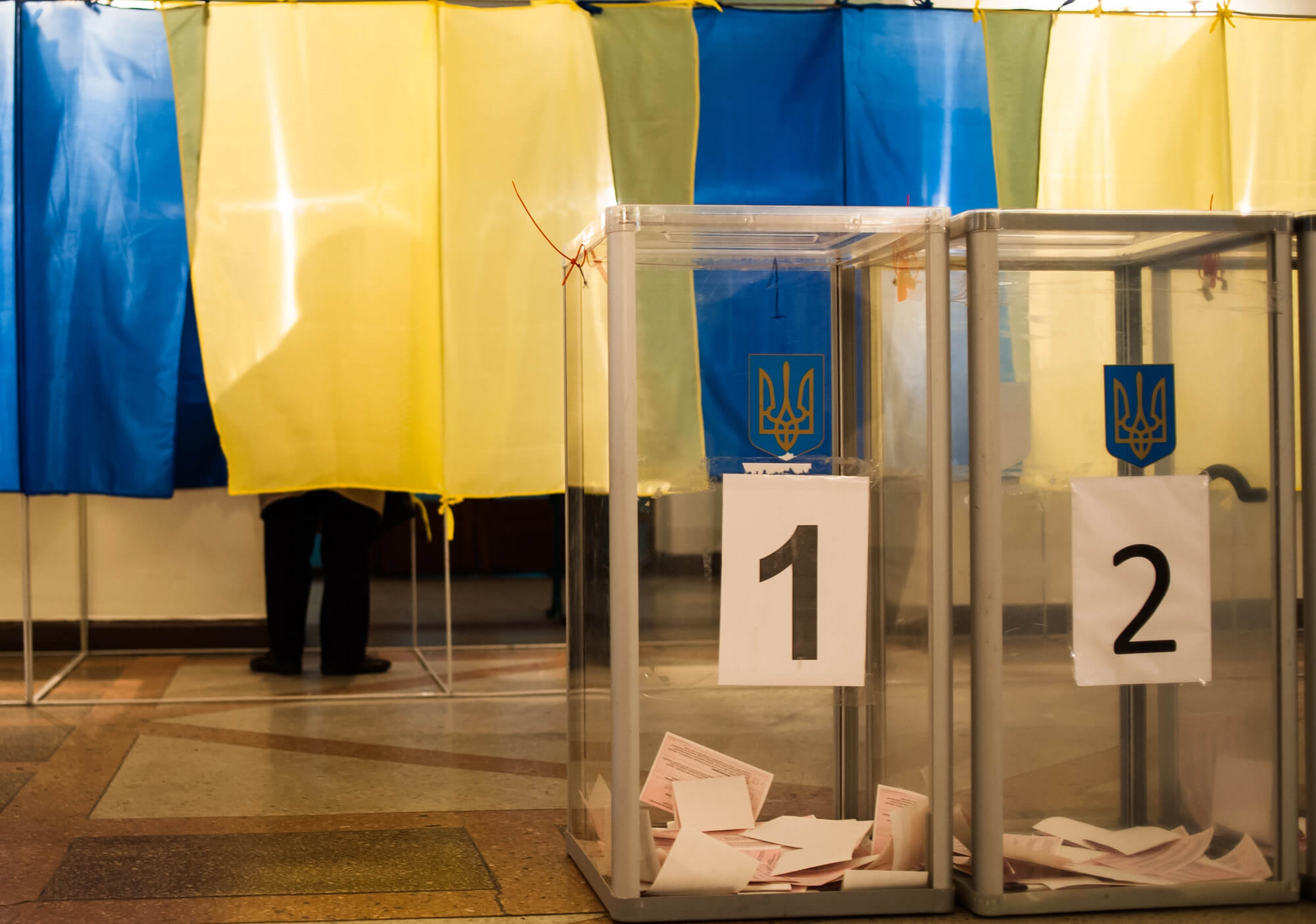The electoral process is the foundation of democracy, as it is through elections that citizens exercise their right to vote and determine the future course of their country’s development. Therefore, it is essential for elections to be conducted fairly and transparently, ensuring just outcomes and legitimizing the elected government.
Ensuring fair and just post-war elections is particularly important. Ukraine will face numerous challenges: a large number of refugees, IDPs, Ukrainians in occupied territories, accessibility of polling stations for people with disabilities, and more. As a result, discussions are already underway regarding alternative voting methods, including the introduction of internet voting. However, is it feasible to implement this idea in Ukraine, and what factors need to be considered?
Pros and Cons of Internet Voting
One of the greatest advantages of internet voting is its inclusivity. Online voting enables low-mobility and busy population groups to cast their votes in just a few minutes. However, there are obstacles to achieving full inclusivity, as online voting requires reliable internet coverage across all regions, modern devices, and a high level of digital literacy among the population. Additionally, data protection must be ensured, as discussed below.
Another advantage is the reduction in election costs. However, this can only be a benefit in the long term. To ensure transparent and secure online voting, significant initial investments are required to establish the necessary technical infrastructure, conduct effective voter education campaigns, and continuously address system flaws and vulnerabilities. Moreover, traditional voting methods must remain accessible for those who choose to use them, meaning that, in the short term, election costs will only increase.
An argument in favor of implementing online voting is the potential increase in voter turnout, particularly among young people. However, the experience of other countries shows that turnout either does not increase at all or rises by only a few percentage points. For instance, in Ontario, voter turnout in municipalities that introduced online voting was, on average, 2% higher than in those that did not offer this voting method. Young people are more interested in understanding why they should vote at all rather than in the voting method.
The biggest disadvantage of internet voting is its vulnerability to cyberattacks. There are significant risks of hacking and potential interference in the election process, particularly from countries that engage in hybrid interference in other states’ electoral processes. Even if the state’s technical infrastructure, authentication processes, and vote encryption are made completely secure, the issue of voters’ personal devices, which can be susceptible to hacking, remains. For example, during the 2023 national elections in Ecuador, voters abroad were unable to cast their votes due to hacker interference.
It is crucial for online voting to inspire trust and ensure transparency. Due to the complexity of technical processes, voters may not fully understand the mechanisms that guarantee the fairness and transparency of internet voting. If the population lacks trust in the voting process, the legitimacy of the elected candidates may be called into question. Any negative experience could quickly turn public opinion against the new technology. Moreover, even if maximum transparency and fairness are achieved, certain political forces may stir societal unrest by claiming that absolute transparency in online voting cannot be ensured.
Another drawback is the inability to fully guarantee the secrecy of voting, as mandated by the Constitution of Ukraine (a similar provision exists in many other countries). Online votes must be verified in some way during processing. Therefore, it is crucial to develop reliable mechanisms that allow citizens to freely express their choice without any pressure. The problem is that even a multi-level verification system, protected from external threats, remains vulnerable to the human factor: a responsible individual may neglect their duties, be bribed, or an empowered official may misuse their authority to access voting secrecy.
Example of Estonia
Estonia is the only country in the world that successfully practices online voting alongside “traditional” methods during elections at all levels. The country began developing digital government services in the 1990s, and the idea of introducing online voting emerged in 2001. The first elections featuring online voting took place in 2005, with only 1.9% of voters using the tool at the time. The number of voters choosing internet voting has increased with each election cycle. In the 2023 parliamentary elections, for the first time in global history, the number of online votes (51%) surpassed the number of votes cast in the traditional format. Estonian authorities regularly conduct system audits to identify and address critical vulnerabilities and shortcomings, ensuring public trust. Estonia’s example shows that implementing online voting is possible, but it is a long and challenging journey.
For identity verification and access to online government services, Estonians rely on ID cards or Mobile-ID. In order to vote, a special card reader is required to connect to a computer and read the encrypted key stored on the ID card’s chip, or a special SIM card is needed to use Mobile-ID. The signed and encrypted vote is sent to servers for verification. Upon successful verification, the signature is removed to ensure the anonymity of the vote. Estonians can change their vote multiple times until online voting closes, which helps prevent potential bribery or coercion. Additionally, after online voting closes, citizens can cast their vote in person at polling stations, which automatically nullifies their online ballot.
Experience of other countries
In 2023, the UAE conducted fully electronic parliamentary elections, where online voting was available (previously, since 2006, voters could cast their votes using electronic voting machines located at polling stations). As this was their first experience, it is too early to draw conclusions. There are also questions regarding how fairness and transparency of the results were ensured in these elections.
Unlike Estonia, some countries have abandoned online voting based on technical and economic feasibility studies and pilot project experiences. For instance, Norway tested online voting in local elections in 2011 and national elections in 2013 but discontinued it in 2014 due to security concerns and its low effectiveness in increasing voter turnout. Switzerland mailed special access codes for online voting. Shortly after, the government launched a contest to identify system vulnerabilities, during which critical issues were found, leading to the program’s suspension. However, Switzerland continues to experiment with online voting formats. In Finland, a special expert group concluded that existing technologies do not meet the necessary requirements, particularly regarding voter verification and maintaining voting secrecy.
Of course, each country has its unique socio-political characteristics and institutional capabilities. Simply copying the experiences and practices of other countries does not guarantee the effective implementation of online voting. Therefore, before introducing this tool, it is essential to thoroughly analyze the country’s needs and the challenges it may face.
Challenges for Ukraine
For a long time, many experts and political figures have emphasized the importance of early planning for post-war elections in Ukraine. Considering the challenges that Ukraine is likely to face in the next elections, proposals to explore the option of online voting have been made. However, the facts outlined above make it clear that conducting internet voting is a challenge for any country, making it crucial to identify the key issues Ukraine might encounter.
Firstly, implementing online voting would require amendments to Ukrainian legislation. The Constitution of Ukraine does not allow Parliament to authorize voting without external oversight and monitoring of the process for an extended period (more than one day). Online voting occurs in an uncontrolled environment, which means this tool cannot be deployed immediately after lifting martial law. Time would be needed to develop a regulatory framework and an electronic voting system. Additionally, constant changes to electoral legislation and the new electoral system adopted in 2019, which has not yet been tested in practice, further complicate the implementation of new technologies in the next elections.
Secondly, despite the existing experience in providing electronic government services, implementing effective and reliable online voting mechanisms will require several electoral cycles. Vulnerabilities and flaws in the system are likely to surface during its use. Hastily introducing such a system could result in errors within the multi-level mechanisms that ensure voting secrecy, potentially compromising the entire process.
Thirdly, Ukraine will need to invest significantly more resources into building an online voting system than other countries. Russia has a history of interfering in the electoral processes of other states, often trying to do it covertly. In Ukraine’s case, open hostility makes cyberattacks on Ukrainian infrastructure highly likely even after the cessation of hostilities, with electoral processes being a particularly vulnerable target. As experience from countries like Romania and Moldova shows, Russian interference can be expected not only during voting but also throughout the campaign period. Therefore, Ukraine should follow the example of European countries by restricting the use of platforms like Telegram and TikTok during the election period.
Fourthly, Ukraine is neither technically nor socially ready for internet voting. There are persistent issues with internet access in remote areas and regions affected by military actions. Some individuals, especially older adults, may require assistance to navigate the voting process, complicating the procedure and potentially compromising voting secrecy. Moreover, there is no consensus among Ukrainians on the issue of remote voting: 44.2% support it, while 48.6% oppose it. Distrust or misunderstanding of internet voting mechanisms could lead to social discontent and undermine the legitimacy of the elections as a whole.
Currently, online voting cannot provide absolute security, meaning there will always be a constant threat of successful interference by external actors. Public distrust in internet voting could quickly negate all the costs and efforts invested in developing the system.
Conclusion
Internet voting is a relatively new electoral technology, making it premature to draw definitive conclusions, as there are both clear advantages and significant drawbacks to online voting. However, technology continues to evolve and improve, which may eventually lead to the widespread use of online voting in elections.
At present, most countries—apart from Estonia and the UAE—have either abandoned online voting at the national level or have yet to attempt its implementation. It is important to understand that the positive experience of one country cannot necessarily be transferred to another, especially given the differences in size between Ukraine and Estonia and the varying levels of technological penetration in these countries.
In Ukraine’s current context, implementing online voting does not appear to be the most viable solution. Ukraine requires time to develop legal frameworks, establish the necessary technical infrastructure, and conduct tests to identify and address the system’s shortcomings and vulnerabilities. Moreover, issues such as public distrust, the potential for non-transparent use of the tool, and interference from Russia could severely undermine the effective implementation of online voting.
Photo: depositphotos.com/ua
Attention
The authors do not work for, consult to, own shares in or receive funding from any company or organization that would benefit from this article, and have no relevant affiliations


